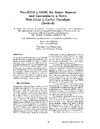Identificador persistente para citar o vincular este elemento:
https://accedacris.ulpgc.es/jspui/handle/10553/46937
| Campo DC | Valor | idioma |
|---|---|---|
| dc.contributor.author | Abbott, D. | en_US |
| dc.contributor.author | Al-Sarawi, S. F. | en_US |
| dc.contributor.author | Gonzalez, B. | en_US |
| dc.contributor.author | Lopez, J. | en_US |
| dc.contributor.author | Austin-Crowe, J. | en_US |
| dc.contributor.author | Eshraghian, K. | en_US |
| dc.date.accessioned | 2018-11-23T09:33:16Z | - |
| dc.date.available | 2018-11-23T09:33:16Z | - |
| dc.date.issued | 1998 | en_US |
| dc.identifier.uri | https://accedacris.ulpgc.es/handle/10553/46937 | - |
| dc.description.abstract | The neu-MOS (vMOS) transistor is a new device that enables the design of conventional digital and analog circuits, in standard CMOS, with a factor of 5-10 decrease gate count. Furthermore, vMOS circuit characteristics are insensitive to transistor parameter variations but instead rely on coupling capacitor ratios. In this paper, we demonstrate this principle with results from fabricated controlled gain amplifiers. This new technology is ideal for smart sensors where a high functionality per pixel area and good matching between pixels is required. Moreover, we discuss the advantages of smart sensors in GaAs technology and the viability of developing a vGaAs paradigm. | en_US |
| dc.language | eng | en_US |
| dc.relation.ispartof | Proceedings of the IEEE International Conference on Electronics, Circuits, and Systems | en_US |
| dc.source | Proceedings of the IEEE International Conference on Electronics, Circuits, and Systems,v. 3, p. 397-404 | en_US |
| dc.subject | 3307 Tecnología electrónica | en_US |
| dc.title | Neu-MOS (νMOS) for smart sensors and extension to a novel neu-GaAs (νGaAs) paradigm | en_US |
| dc.type | info:eu-repo/semantics/article | en_US |
| dc.type | Article | en_US |
| dc.identifier.scopus | 0032275948 | - |
| dc.contributor.authorscopusid | 56053895400 | - |
| dc.contributor.authorscopusid | 7004170747 | - |
| dc.contributor.authorscopusid | 56082155300 | - |
| dc.contributor.authorscopusid | 7404444793 | - |
| dc.contributor.authorscopusid | 6504651407 | - |
| dc.contributor.authorscopusid | 7007041524 | - |
| dc.description.lastpage | 404 | en_US |
| dc.description.firstpage | 397 | en_US |
| dc.relation.volume | 3 | en_US |
| dc.investigacion | Ingeniería y Arquitectura | en_US |
| dc.type2 | Artículo | en_US |
| dc.utils.revision | Sí | en_US |
| dc.identifier.ulpgc | Sí | es |
| item.fulltext | Con texto completo | - |
| item.grantfulltext | open | - |
| crisitem.author.dept | GIR IUMA: Tecnología Microelectrónica | - |
| crisitem.author.dept | IU de Microelectrónica Aplicada | - |
| crisitem.author.dept | Departamento de Ingeniería Electrónica y Automática | - |
| crisitem.author.dept | GIR IUMA: Diseño de Sistemas Electrónicos Integrados para el procesamiento de datos | - |
| crisitem.author.dept | IU de Microelectrónica Aplicada | - |
| crisitem.author.dept | Departamento de Ingeniería Electrónica y Automática | - |
| crisitem.author.orcid | 0000-0001-6864-9736 | - |
| crisitem.author.orcid | 0000-0002-6304-2801 | - |
| crisitem.author.parentorg | IU de Microelectrónica Aplicada | - |
| crisitem.author.parentorg | IU de Microelectrónica Aplicada | - |
| crisitem.author.fullName | González Pérez, Benito | - |
| crisitem.author.fullName | López Feliciano, José Francisco | - |
| Colección: | Artículos | |
Citas SCOPUSTM
1
actualizado el 08-jun-2025
Visitas
159
actualizado el 25-oct-2025
Descargas
300
actualizado el 25-oct-2025
Google ScholarTM
Verifica
Comparte
Exporta metadatos
Los elementos en ULPGC accedaCRIS están protegidos por derechos de autor con todos los derechos reservados, a menos que se indique lo contrario.
